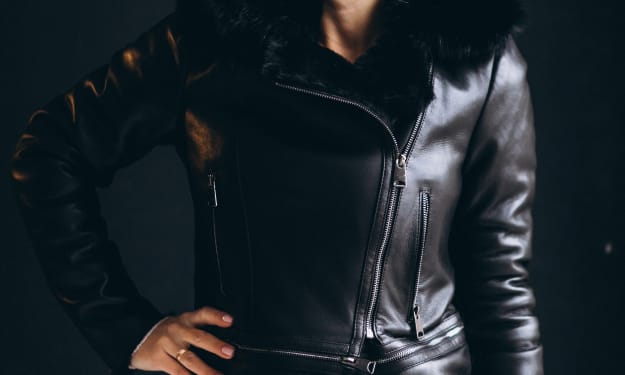Would you believe he used to wear high heels?
Heels: Extreme masculinity to the height of femininity

Today, high heels are worn as the ultimate statement of femininity. But what exactly is femininity, anyway? Worn by women the world wide, heels send off a vibe of elegance, class and self esteem. It may be true that some men wear heels but only if they are displaying their femininity as well. From one extreme to the other, heels actually began as a man's shoe. A manly man's shoe. It's funny that today, a man's man would not be caught dead in heels, but a few hundred years ago, he would have donned them as the only thing is his closet that would slay.
Heels originated as a soldier's clothing item born out of sheer necessity. In 15th century Persia, cavalry soldiers used them to keep their feet from slipping out of the horses' stirrups. So these soldiers could safely and comfortably slaughter, maim, and defeat their enemies, while fearing not falling out of the saddle. Therefore, it really was that only the fiercest men were running around in heels.
After these soldiers solidified the high heel as a symbol of potent masculinity, migrants from Persia brought the fashion to Europe. Here aristocrats adopted the wearing of heels in order to increase in height and accordingly, intimidation status.
King Louis XIV was so enamored with this result, he brought red soled high heels into fashion in 1673. Not only did he do this, but he actually restricted the wearing of this particular shoe to only members of his royal court. So yes, all the King's men were in their red high heels. Naturally, due to their donning of the shoe, it began to be seen as a symbol of superiority and privilege. Commoners soon copied.
Although men were the first to make a statement in heels, women of course, jumped on board the train and began wearing them as well. And they went above and beyond, literally, the sort of heels men wore. "Chopines" as they were called, were a shoe worn by Venetian women in the 15-17 century. These shoes were often so high (about 18 inches) that the women would have to walk with maids flanking them so they would have something to hold onto.
This undoubtedly was the beginning of the trend we see today with women owning heels and men simply watching them walk around.
To me, this brings up an important currently trending topic: masculinity and femininity. The journey of the heel from soldiers to strippers begs the question, how can we even define masculinity and femininity? As well as, does it have anything at all to do with the clothes that we wear? I like to think of masculinity as something specific and innate to men and femininity as something specific and innate to women. Its fascinating when you use the heels as the litmus test here because today heels are the height of femininity. Most masculine men wouldn't even fathom putting on a pair. But given that they originated as something men wore, we can see how our ideas of what femininity and masculinity are can change throughout history. Maybe the clothes we wear have absolutely nothing to do with our innate essence.
Still it wouldn't affect the confusion and surprise we would feel seeing a lumberjack coming down the block in heels. We have to admit that there are some things that just go together, like women and heels. With this in mind, wonder what other trends and social norms may have began as solely for men and changed into something women do and vice versa. What else began as masculine that has morphed into feminine? What else began as feminine that has morphed into masculine? Heels are just the beginning. Maybe we can get men to bring it back.
About the Creator
Enjoyed the story? Support the Creator.
Subscribe for free to receive all their stories in your feed. You could also pledge your support or give them a one-off tip, letting them know you appreciate their work.





Comments
There are no comments for this story
Be the first to respond and start the conversation.